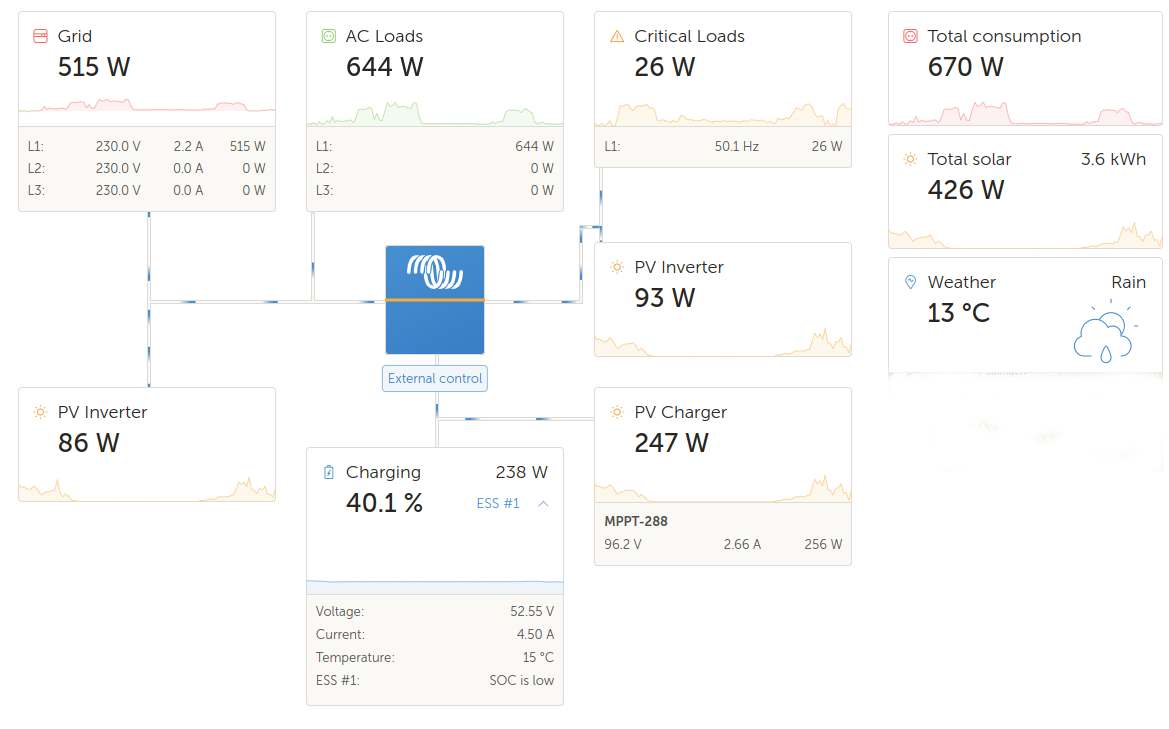Hello,
I have an ESS system with the following components:
- Multiplus II
- Victron MPPT
- PV inverter connected to AC in
- PV inverter connected to AC out
My minimum SOC is set to 40%.
Is the following a normal behavior of an ESS system?
- MPPT charges the battery even when minimum SOC is reached and PV is not enough to satifify the load of all consumers? See the following picture:

SOC is 40.1% and the MPPT charges the battery even when energy is needed from the grid. Only the PV inverters are used to reduce the energy needed from the grid.
This way the battery is charged until the SOC of the battery reaches a certain level. If this is reached the battery is discharged down to the minimum SOC.
Is this the normal behaviour of an ESS system?
